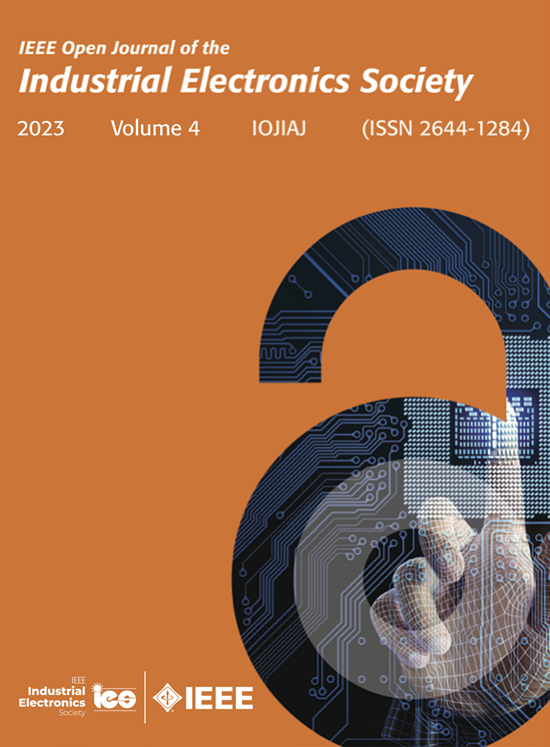Optimized Sigmoid-Based Complete Ensemble Empirical Mode Decomposition for Energy Management in Hybrid Electric Vehicles
IF 4.3
Q1 ENGINEERING, ELECTRICAL & ELECTRONIC
IEEE Open Journal of the Industrial Electronics Society
Pub Date : 2025-04-09
DOI:10.1109/OJIES.2025.3559447
引用次数: 0
Abstract
This article proposes a sigmoid-based particle swarm optimization (PSO) for a complete ensemble empirical mode decomposition (SPSO-CEEMD) applied to the energy management system of a hybrid electric vehicle. The low-frequency power demand, to be supplied by the lithium-ion battery (LIB) and internal combustion engine (ICE), is calculated by the CEEMD, while sigmoid functions define the ICE reference, avoiding discontinuities in the control strategy and limiting the response frequency in the implementation of power, velocity and angle control loops for the ICE butterfly valve actuator. High-frequency demand is handled by the ultracapacitor (UC), which controls the dc-link voltage. The sigmoid functions are optimized to reduce the ICE fuel consumption and the LIB aging, considering ICE emissions as constraints in the PSO. To make the UC available in next peak demands, its terminal voltage restoration is relaxed by a phase-lag compensator (PLC) tuned to actuate only after power delivers, which reduces the influence in the LIB dynamic. Experimental and numerical results under the HWYCOL, SC03, and a Brazilian real-world drive cycles show that SPSO-CEEMD reduces the total operational cost, LIB stress and aging compared to state-of-the-art strategies. Despite larger UC voltage restoration error with the PLC, LIB power dynamic is not significantly affected, increasing its lifetime by 2.74% and 10.96% compared to traditional PI and low-pass filter strategies, respectively. Moreover, the total operational cost is reduced by 18.28% and 47.54% in relation to the exclusive operation strategy and interval type-2 fuzzy logic control adapted from the literature.基于优化sigmoid的混合动力汽车全集成经验模态分解
提出了一种基于s型模态的粒子群优化方法,并将其应用于混合动力汽车的能量管理系统中。由CEEMD计算由锂离子电池(LIB)和内燃机(ICE)提供的低频功率需求,而sigmoid函数定义ICE参考,避免了控制策略中的不连续,并限制了ICE蝶阀执行器的功率、速度和角度控制回路的响应频率。高频需求由控制直流链路电压的超级电容器(UC)处理。考虑到PSO中的ICE排放限制,优化了s型函数,以减少ICE燃料消耗和LIB老化。为了使UC在下一个峰值需求中可用,其终端电压恢复通过相位滞后补偿器(PLC)放松,调整为仅在供电后才启动,从而减少了对LIB动态的影响。在HWYCOL、SC03和巴西实际驱动循环下的实验和数值结果表明,与最先进的策略相比,SPSO-CEEMD降低了总运营成本、LIB应力和老化。尽管PLC的UC电压恢复误差较大,但LIB功率动态并未受到明显影响,与传统PI和低通滤波器策略相比,其寿命分别增加了2.74%和10.96%。采用文献中的排他运行策略和区间2型模糊逻辑控制,总运行成本分别降低18.28%和47.54%。
本文章由计算机程序翻译,如有差异,请以英文原文为准。
求助全文
约1分钟内获得全文
求助全文
来源期刊

IEEE Open Journal of the Industrial Electronics Society
ENGINEERING, ELECTRICAL & ELECTRONIC-
CiteScore
10.80
自引率
2.40%
发文量
33
审稿时长
12 weeks
期刊介绍:
The IEEE Open Journal of the Industrial Electronics Society is dedicated to advancing information-intensive, knowledge-based automation, and digitalization, aiming to enhance various industrial and infrastructural ecosystems including energy, mobility, health, and home/building infrastructure. Encompassing a range of techniques leveraging data and information acquisition, analysis, manipulation, and distribution, the journal strives to achieve greater flexibility, efficiency, effectiveness, reliability, and security within digitalized and networked environments.
Our scope provides a platform for discourse and dissemination of the latest developments in numerous research and innovation areas. These include electrical components and systems, smart grids, industrial cyber-physical systems, motion control, robotics and mechatronics, sensors and actuators, factory and building communication and automation, industrial digitalization, flexible and reconfigurable manufacturing, assistant systems, industrial applications of artificial intelligence and data science, as well as the implementation of machine learning, artificial neural networks, and fuzzy logic. Additionally, we explore human factors in digitalized and networked ecosystems. Join us in exploring and shaping the future of industrial electronics and digitalization.
 求助内容:
求助内容: 应助结果提醒方式:
应助结果提醒方式:


